Basilica of Bom Jesus, Goa Overview
The Basilica of Bom Jesus Church located in Goa is one of a kind in India and is known for its exemplary baroque architecture. Built in 1594 and consecrated in 1605, the building of this church coincides with the beginning of Christianity in India. The church is located in Old Goa in Bainguinim about 10 km away from Panjim. The oldest church in Goa, it holds the remains of St. Francis Xavier, a special friend of St. Ignatius Loyola with whom he founded the Society of Jesus (Jesuits). Even after 400 years, the remains are in good condition and are taken out once every decade.
A site with rich cultural and religious significance, the Basilica of Bom Jesus has been declared a World Heritage Site by UNESCO. Literally translating to ‘Holy Jesus’, this is the only church in Old Goa that is not been plastered on the outside. The facade of the church has triangular roofing which is delicately carved with the initials ‘IHS’, which is an abbreviation for Jesuit emblem meaning ‘Jesus, Saviour of Men’.
Inside, the floor of the Basilica is made of marble mosaic with precious stones, giving it a solemn appearance. The interior is embellished with a screen that runs from the floor to the ceiling and has the image of St. Ignatius Loyola protecting an infant Jesus. Above all is the image of the Holy Trinity, which is the most sacred symbol in Christianity. The Basilica of Bom Jesus is over 408 years old and is open to the public every day.
The Basilica of Bom Jesus is the most august and famous of all the churches in Old Goa. It contains the relics of St. Francis Xavier, Patron saint of Goa, Apostle of the Indies. He was known as Goencho Saib by most of the people of Goa. The construction of the church began on the 24th November 1594 AD from the funds bequeathed for this purpose by Dom Jeronimos Mascarenhas. It was blessed by the Archbishop Dom Fr Aleixo de Menezes on the15th May1605 AD. It became the first church in India to be elevated to the status of a minor basilica in 1946.
The three storey structure is combination of Doric, Corinthian and Composite style of architecture from the exterior. It is built of black laterite stone. The fa�ade is divided into four parts. The lowest part contains three graceful entrances. The part above it has three large windows corresponding to the three entrances. The third section has three circular windows and the fourth part forms a quadrangle decorated lavishly with arabesque. All the sections are decorated with pillars and carvings on basalt brought from Bassein in north Goa. The interior of church is made of Mosaic-Corinthian style and is noteworthy for its simplicity. Three rows of windows are rising one over another from each side besides those of the choir and corresponding circular ones. The windows in the second row have a protruding balcony skillfully attached to them. The entrance is beneath the choir and is supported by columns. The body of the Basilica is spacious.
The relics of St Francis Xavier were kept in this chapel from 1623-55 AD. The Blessed Sacrament was earlier kept on the main altar under the statue of St Ignatius and now is preserved in a gold tabernacle. A cenotaph of gilded bronze to Dom Jeronimos Mascarenhas, Captain of Cochin and Ormuz and the benefactor of the church, is on the northern wall near the side wall. The church is dedicated to the Infant Jesus and is exquisitely decorated. The infant Jesus is shown under the protection of St Ignatius of Loyola, the Founder of the Society of Jesus. The statue of St Ignatius is almost 3 m high. The side have altar to Our Lady of Mercy and St Michael. The Liturgical altar was set up by assembling the old discarded altars and was inaugurated on 12th March 1965. The chapel and tomb of St Francis Xavier is to the south of the church. The body of St. Francis Xavier was brought here from the College of St Paul after his canonization in 1624 AD. It was shifted to its present location in 1655 AD. The chapel has three doors on the east, west and south. A huge picture of the saint is hung on the last door. The chapel is decorated with 27 pictures representing the life and miracles of the saint.
The mausoleum is a three-tiered bier built by the Duke of Tuscany (1670-1737 AD) in return for the pillow on which the head of St. Francis Xavier rested for many years after his death. Giovanni Batista Foggini from Florentine designed the structure and was completed in1698 AD. It arrived at Goa on 16th September 1698 from Florence, Italy and was erected between 14th October and 9th November 1698. On the top of the bier lies the Silver Casket, which contains the relics of the saint.
About Basilica of Bom Jesus
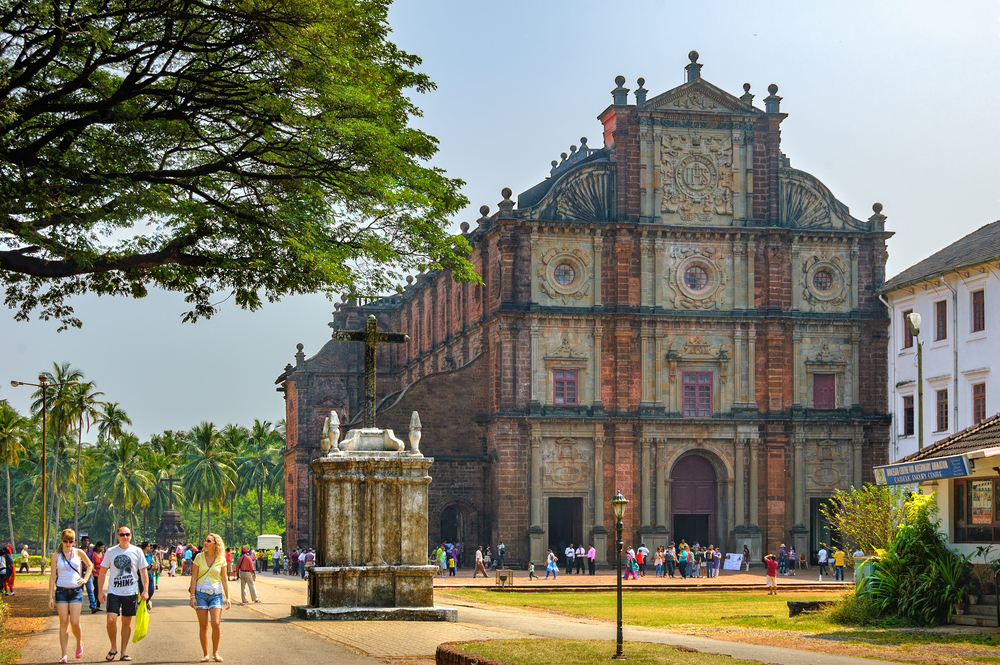
The Basilica of Bom Jesus is a Roman Catholic Church located in Old Goa and stands to be the oldest Church of Goa. It is a UNESCO recognized World Heritage Site.
The church completed its construction in the year 1604 and stands as an epitome of the Portuguese colonial architecture and Baroque architecture.
It is located in Bainguinim, about 10 km from Panjim, and attracts several tourists from all across the world. The church is known to hold the relics of St. Francis Xavier, who was known for his phenomenal insight and therapeutic healing powers.
Even after 400 years of burial, the remains are said to be in good condition and are taken out every decade. It is, in fact, one of the Seven Wonders of the World of Portuguese origin.
‘Bom Jesus’ is a word of Latin origin and translates to ‘Holy (or Good) Jesus.’ The rooftop of the church is triangular, and is inscribed with the initials ‘IHS’, which translates to the Jesuit emblem meaning ‘Jesus, Savior of Men.’
The façade of the Church constitutes a main altar flanked by two more altars. The main altar is decorated with a statue of St. Ignatius Loyola overlooking and protecting Baby Jesus. The surroundings are frolicked with paintings and carvings directly from the Bible, and it also has a gallery that inhabits oil paintings belonging to the years 1973 and 1976.
The Architecture of Basilica of Bom Jesus-
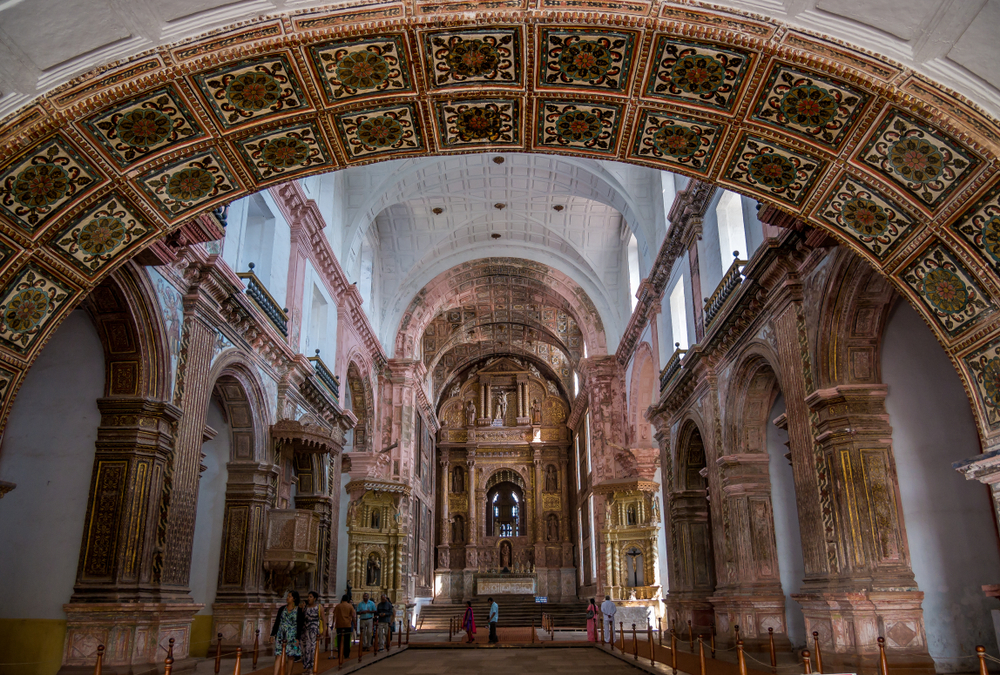
The Basilica of Bom Jesus is a finesse of the Baroque architecture. The material used to build this monumental masterpiece is black granite and is a mix of Corinthian, Doric and composite styles. The Basilica stands 61 feet tall and has pillars intricately carved out of basalt.
The interior of the church has been inspired by Mosaico-Corinthian architecture with two adjacent structures of the same decorating the entrance.
The entire structure constitutes of an altar flanked by two chapels and a belfry located at the back of the church. The right side has the altar of St. Anthony while the left side has a grand wooden statue of St. Francis Xavier.
Modern Art GalleryWithin the complex and daintily carved architecture of Basilica of Bom Jesus lie two galleries. They have oil paintings dedicated to various verses in the Bible, designed by some of the renowned artists from 1973 to 1976
These paintings are mostly Italian and speak about the culture and Christianity from an Italian perspective. The largest paintings that are on display are called ‘Genesis’ (4 ft x 28 ft) and ‘The Last Judgement’ (6 ft x 9 ft).
History of Basilica De Bom Jesus
This basilica is considered as one of the seven wonders originated by Portuguese in the world. The work for this wonder started at the end of the 16th century by Dom Fr. Alexio de Menezes, a famous archbishop. This basilica was considered a landmark for Christianity in the country. St. Francis Xavier was one of the important figures who helped in spreading Christianity in the country. This church holds the earthly remains of the saint.
There is a small professed house inside the campus of this basilica. This professed house has history which dates even before the basilica. The story of the beginning of this church is quite an interesting one too. Dom Alexio, Loyola and others were behind the growing ‘Order of Jesuit’ in India. Right before the construction of this basilica, the senate and other major political heads opposed this order and stopped the construction of the church. However, the founders did not stop. They turned a small house in this region into church with the name ‘Jesus’ inscribed on their wooden door. They ran the bell the next day morning and opened their home as a church. The political opponents couldn’t legally destroy or damage this home-turned church. However, in the 17th century, a fire broke in the home and destroyed the site and it was rebuilt in 1783 with a spacious structure.
How to Reach Basilica of Bom Jesus

From Panaji-
The Basilica of Bom Jesus is approximately 10 km from Panjim. This distance can be covered by hiring a cab, or getting a rental moped or a scooter for the day. It will take approximately 25 minutes to reach the Church from Panjim.
From Goa International Airport-
The Church resides at a distance of 24.1 km from Goa International Airport. This distance can be covered by hiring a cab or an auto from outside the airport. You can also visit a bike rental shop and rent a scooter or moped for the day and then go to the Church.
Best Time to Visit Basilica of Bom Jesus
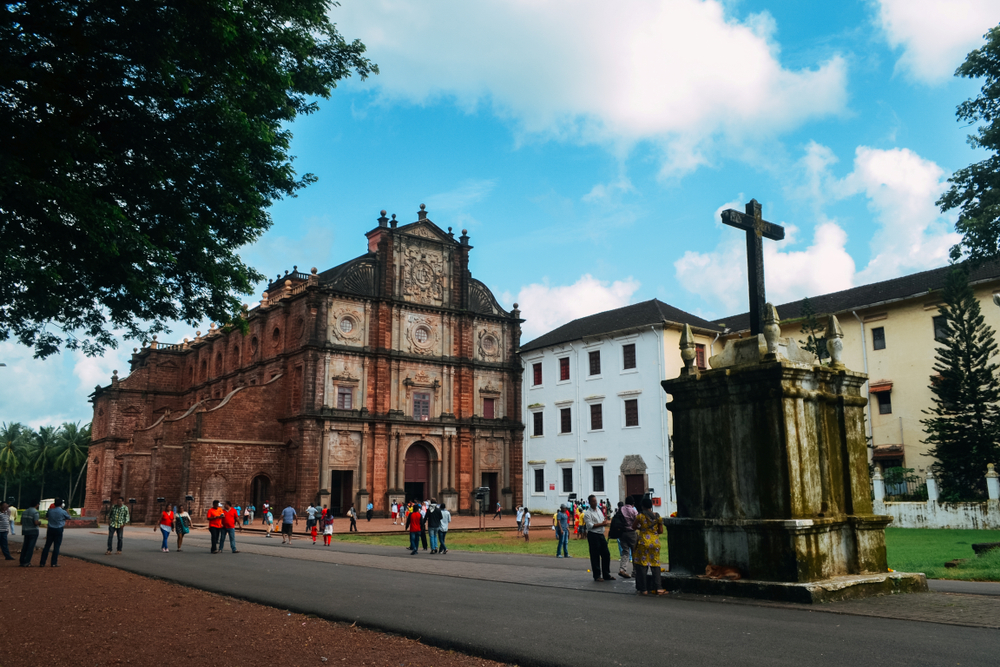
The best time to visit the Basilica of Bom Jesus is from September to March. The glory and grandeur of the church are best expressed in post-monsoon when the rain showers have cleaned the surroundings and left the exterior of the church in a vividly detailed pattern.
It stands remarkably against the dark grey clouds and contrasts with a significant superiority.
Other than that, the church is also best visible during winters, complementing the bright sunny days with some designs glimmering atop the church.



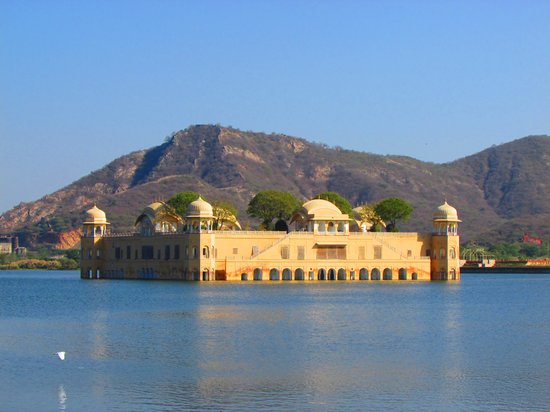
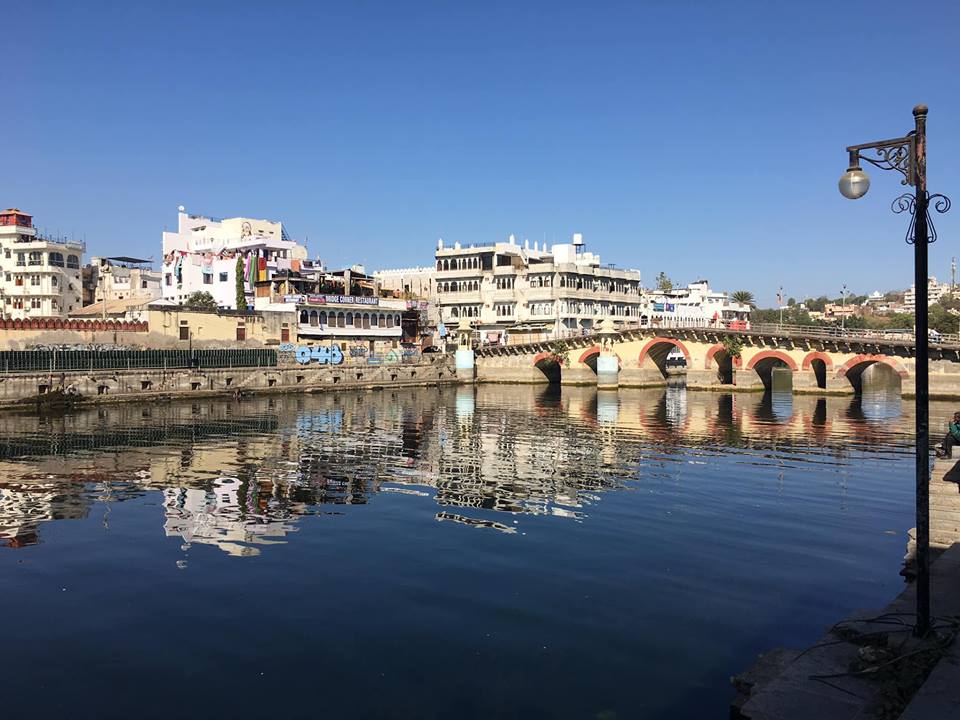
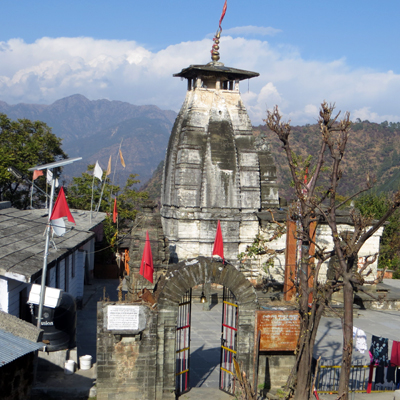

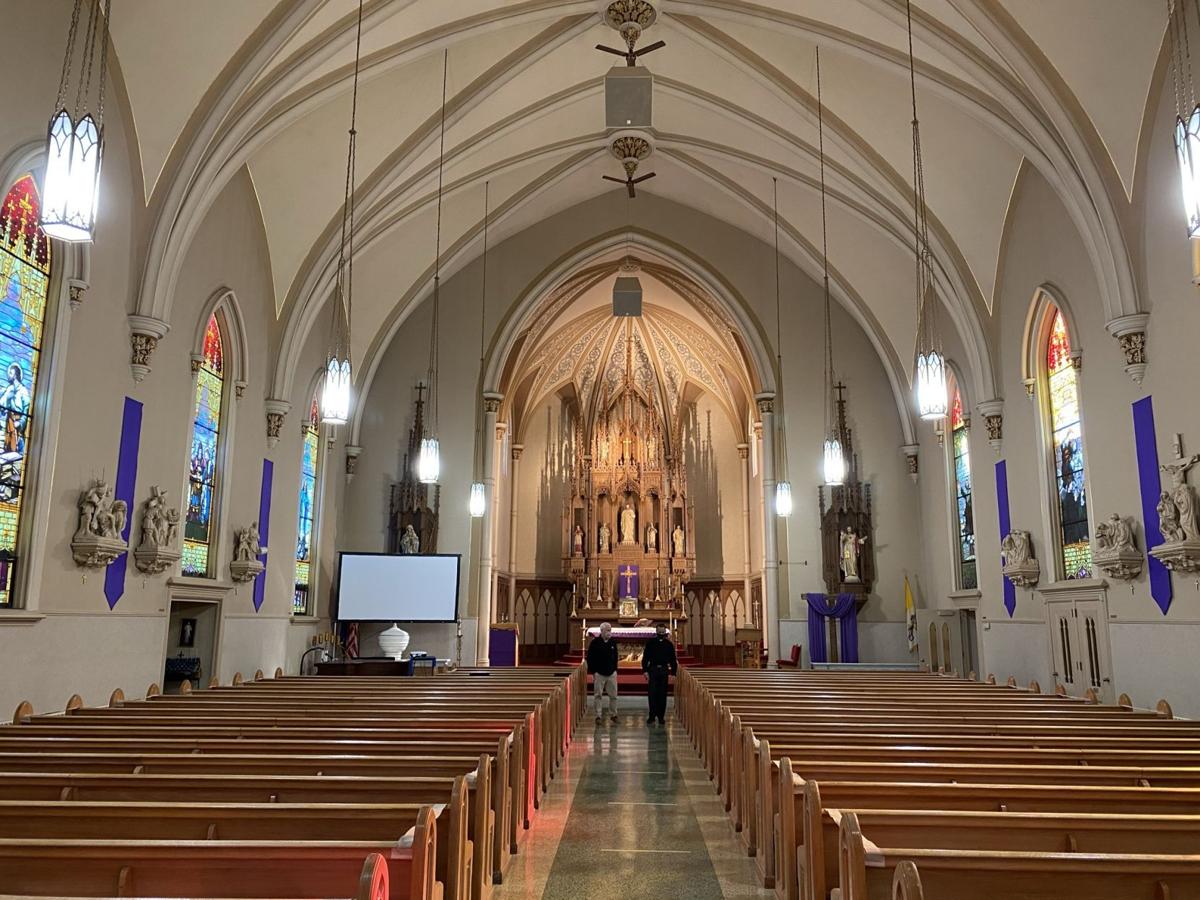

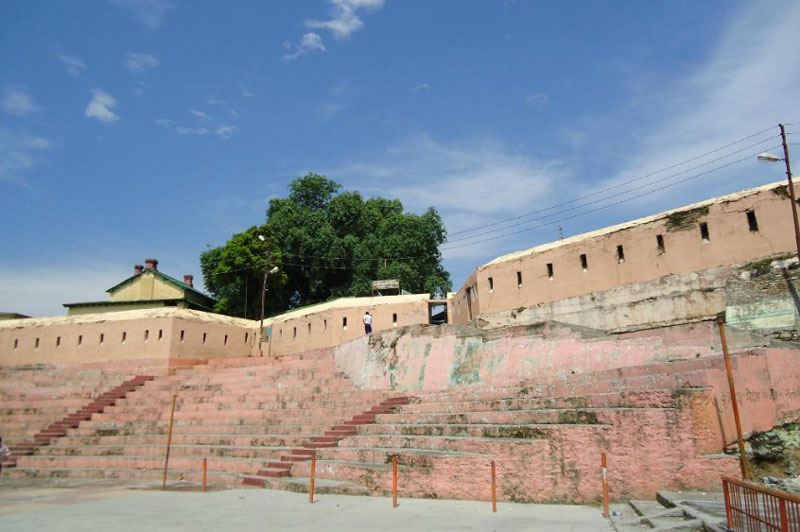


2 Comments
Comments are closed.